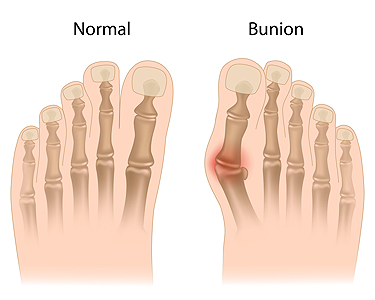
Bunions can affect teenagers, not just adults. A bunion is a bump that forms at the base of the big toe when the joint moves out of place. In adolescents, this often happens because of inherited foot structure or tight shoes. The condition may cause pain, swelling, or difficulty wearing certain shoes. Treatment usually begins with simple steps like changing footwear, using pads or cushions, and trying custom shoe inserts to ease pressure on the joint. If the bunion causes ongoing pain or affects walking, surgery may be considered. One option is a minimally invasive surgical technique that realigns the bone near the big toe joint using small incisions. It is often used in adolescents to correct bunions with less tissue disruption and faster recovery than open surgery. This allows for less disruption to the surrounding tissue and a quicker recovery. If your teen has a bunion that is not improving with conservative care, it is suggested that you see a podiatrist to explore the best treatment approach.
If you are suffering from bunion pain, contact Frederick Matthews, DPM of Innovative Foot and Ankle Care. Our doctor can provide the care you need to keep you pain-free and on your feet.
What Is a Bunion?
Bunions are painful bony bumps that usually develop on the inside of the foot at the joint of the big toe. As the deformity increases over time, it may become painful to walk and wear shoes. Women are more likely to exacerbate existing bunions since they often wear tight, narrow shoes that shift their toes together. Bunion pain can be relieved by wearing wider shoes with enough room for the toes.
Causes
- Genetics – some people inherit feet that are more prone to bunion development
- Inflammatory Conditions - rheumatoid arthritis and polio may cause bunion development
Symptoms
- Redness and inflammation
- Pain and tenderness
- Callus or corns on the bump
- Restricted motion in the big toe
In order to diagnose your bunion, your podiatrist may ask about your medical history, symptoms, and general health. Your doctor might also order an x-ray to take a closer look at your feet. Nonsurgical treatment options include orthotics, padding, icing, changes in footwear, and medication. If nonsurgical treatments don’t alleviate your bunion pain, surgery may be necessary.
If you have any questions, please feel free to contact our office located in Plano, TX . We offer the newest diagnostic and treatment technologies for all your foot care needs.
